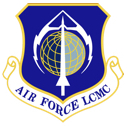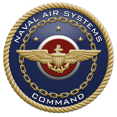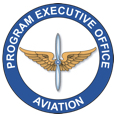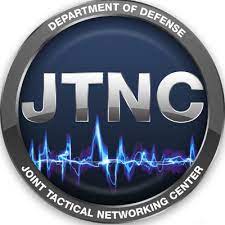Advisory Board: The Advisory Board is to provide guidance and advice to the Consortium. Currently the Advisory Board is inactive.
Steering Committee: The Steering Committee is responsible for the overall guidance of the Consortium. It consists of (i) the Representatives (one primary and one secondary) designated by each Sponsor Member and Principal Member and (ii) non-voting representatives of The Open Group. All standing committees and working groups report to the Steering Committee.
A Standing Committee is established to carry out operational tasks and functions, while a working group is established to complete a specific project.
Enterprise Standing Committee (ESC): The charter of the Enterprise Standing Committee is to define and develop formal products (artifacts) to create a clear, top-level picture of the FACE Enterprise for a wide variety of FACE Consortium and outside audiences, address the FACE role in the context of related initiatives and programs, and ensure internal consistency across the FACE Enterprise.
- Consortium Operations & Processes:
- Course Accreditation SC: The charter of the Course Accreditation Subcommittee is to advise on the Training Accreditation Program. Currently Inactive
- Model-Based Systems Engineering (MBSE): The draft charter of the MBSE Subcommittee is to provide guidance on applying the FACE approach in conjunction with Model-Based Systems Engineering (MBSE) approaches.
- Standards Alignment SC (SASC): The charter of the Standards Alignment Subcommittee is to align to relevant standards development efforts to increase FACE Adoption opportunities.
Integration Workshop Standing Committee (IWS): The charter of the Integration Workshop Standing Committee is to collaborate with the BWG/TWG to establish and enforce technical entrance criteria for public FACE Consortium sanctioned Technical Interchange Meetings (TIM) and similar events & discover, evaluate, and produce FACE reference implementation examples and facilitate adoption and publication of those reference examples.
Business Working Group (BWG): The charter of the Business Working Group is to develop and communicate acquisition guidance; define policy and roles & responsibilities of the FACE Conformance Program; and promote the adoption of the FACE Approach. The BWG:
- Collaborates with other FACE Consortium Working Groups and Standing Committees as a key business stakeholder
- Convenes the BWG CCB and participates in others
- Oversees and delegates activities to the BWG subcommittees
- Acquisition Guidance (formerly Business Strategy): The charter of the Acquisition Guidance Subcommittee is to develop and communicate acquisition guidance.
- Conformance Policy: The charter of the Conformance Policy Subcommittee is to define policy and roles & responsibilities of the FACE Conformance Program.
- Outreach: The charter of the Outreach Subcommittee is to promote the adoption of the FACE Approach for software portability and reusability comprised of business processes, technical practices, and open software standards. The BWG Outreach Subcommittee:
- Develops, maintains, and helps execute the FACE Marketing Plan
- Develops and disseminates messaging
- Coordinates and promotes marketing activities including events for a global aerospace and defense audience
Technical Working Group (TWG): The charter of the Technical Working Group (TWG) is to identify open standards where such exist, define standards that do not yet exist, and provide guidance for using these standards to achieve portability and reuse of software-based capabilities across multiple platforms. The TWG:
- Authors the FACE Technical Standard and the Reference Implementation Guide
- Maintains the Conformance Verification Matrix for multiple versions of the FACE Technical Standard
- Convenes its own CCB and participates in others
- Collaborates with the Business Working Group (BWG) on the Conformance Certification Guide
- Collaborates with the Domain Interoperability Working Group (DIOG) on the FACE Shared Data Model
- Collaborates with other FACE Consortium Working Groups and Standing Committees as a key technical stakeholder
-
Airworthiness: The Charter of the Airworhiness Subcommittee is to address airworthiness considerations across the FACE Technical Standard through the following activities:
- to review the FACE Technical Standard and associated documents and recommend updates when content may impede the ability to meet airworthiness requirements; and
- to document how FACE conformance software and associated artifacts contribute towards evidence of airworthiness where possible.
Note: this subcommittee is not responsible for defining airworthiness requirements, nor should the reader infer that following the FACE Technical Standard will automatically qualify software as airworthy.
- Conformance Verification: The charter of the Conformance Verification Subcommittee is to serve as the Technical Working Group (TWG) focal point for the FACE Conformance Program, including:
- Analyze the requirements of each Edition of the FACE Technical Standard and develop a Conformance Verification Matrix (CVM) specific to that edition; including segment allocation, verification methods, potential artifacts needed for inspection, and identification of conditional applicability.
- Provide recommendations for Conformance Test Suite (CTS) and perform technical evaluations upon upgrades to adopted versions of the CTS.
- In coordination with the Business Working Group (BWG), publish and maintain the Conformance Certification Guide and facilitate the Conformance Overview.
- Serve as FACE Verification Authority (VA) Community of Practice (CoP) representation in the FACE Consortium, and provide TWG oversight to ensure published VA CoP guidance is in alignment with each Edition of the FACE Technical Standard.
- General Enhancements: The charter of the General Enhancements Subcommittee is to maintain aspects of the FACE Technical Standard and supporting publications outside the charters of other Technical Working Group (TWG) subcommittees. This includes Portable Components Segment (PCS) and Platform-Specific Services Segment (PSSS), Input/Output Services Segment (IOSS) and the I/O Interface, dependency injection via the Injectables Interface, Life Cycle Management (LCM) Services, and the Interface Definition Language (IDL) to programming language mappings.
- Graphics: The charter of the Graphics Subcommittee is to provide definition and guidance on graphical and compute accerlerator standards and their implementation. Considering interoperability standards concerning 2D & 3D graphics, video streaming services, artificial intelligence, and machine learning for use within the FACE Technical Standard.
- Operating Systems: The charter of the Operations Systems Subcommittee is to consider modifications of the Operating Systems Segment (OSS) sections of the FACE Technical Standard and other Technical Working Group (TWG) work products. The OSS encompasses a variety of foundational capabilities, such as safety and security profiles and capability sets. These foundational capabilities are based on exisiting standards and methodologies for operating systems, programming languages, frameworks, configuration, and health management.
- Transport SC: The charter of the Transport Subcommittee is to manage the Transport Services Segment (TSS) related content for FACE work products, such as the FACE Technical Standard, Reference Implementation Guide, and Problem Report / Change Request (PR/CR) ticket resolution. This subcommittee collaborate with the Business Working Group (BWG), Technical Working Group (TWG), and Domain Interoperability Working Group (DIOG) groups as needed to align requirements and interfaces and to ensure TSS integrates with other FACE capabilities.
- TWG Leads: The TWG Leads Subcommittee is comprised of the TWG Chair, Vice Chair and all subcommittee leads and co-leads. Their role is to coordinate subcommittee activities to ensure the charters of the TWG and Subcommittees are met.
Domain Interoperability Working Group (DIOG): The FACE Domain Interoperability Working Group (DIOG) is the body responsible for all FACE Data Architecture and Data Model aspects. The charter of the DIOG is to determine the elements of the Data Architecture, define those elements, identify applicable open standards where they exist, define standards where none exist, and provide guidance for using these standards to achieve interoperability at the data level. The DIOG defines the Data Architecure standard and relevant sections of the FACE Technical Standard (working with the TWG), provides guidance supporting the standards, develops additional support documentation, provides implementation guidance and supports the developmemnt of procedures for FACE conformance. The DIOG may also develop technical products associated with the FACE Enterprise such as content for inclusion in the FACE Shared Data model.
- Language: The charter of the Data Architecture Language Subcommittee is to define the methodology for capturing data syntax and semantics for the FACE architecture, guided by exisitng standards and methodologies The focus is on data exchanged by software compents developed to the FACE Technical Standard. This subcommittee is responsible for all artifacts that are included in a FACE Standard.
- Shared Data Model: The charter of the Shared Data Model Subcommittee is to review SDM CRs with submitters, provide recommendations to the Shared Data Model Configuration Control Board (SDM CCB), to develop pertinent SDM content, and provide direction to Software Suppliers submitting SDM CRs.
- Guidance: The charter of the Data Architecture Guidance Subcommittee is to develop guidance documents, document best practices, and provide Software Suppliers with the information necessary to adopt the FACE Data Architecture. The Data Architecture Guidance Subcommittee is also responsible for alignment activities and evaluation of other data modeling approaches.





